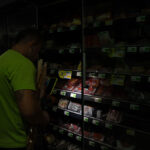The U.K.’s insurance community is poised to fully enter the electronic age with the announcement from RI3K and Xchanging of the “London Market Electronic Insurance Exchange” (FELIX). The new system is described as providing “a framework that charts the business processes, messages and enabling market technology services needed to provide an end-to-end electronic insurance exchange.”
Most importantly the bulletin notes that FELIX is “specifically not an organization, but a ‘framework’ [the ‘F’ part of the acronym] that guides the development of commercial components and services that companies such as Xchanging and RI3K build.”
Think of the creation as a jigsaw puzzle, but with a whole lot of different people each having one or more pieces. That’s more or less what the situation was in the London market after Lloyd’s shelved its highly-touted Kinnect project at the beginning of the year (See IJ Website Jan. 24). London’s insurance companies, brokers, Lloyd’s managing agents, syndicate underwriters, various IT operations and office service providers each had one or more pieces. Your job: put them together. If this could be accomplished, it would create a workable – and more flexible – electronic insurance exchange than Kinnect had tried to do. It would finally offer the London market a real solution for replacing its outmoded and expensive systems with modern technology.
However, for a number of reasons, doing that looked like “Mission Impossible IV”. As Tom Cruise wasn’t available, the London Market had to find someone to do his job. Fortunately they had one in their own backyard. Alex Letts, the CEO of RI3K, was quite willing – even eager – to accept the challenge.
He would be the first one to point out, as he did in an earlier interview, that RI3K is only “part of a larger equation.” He sees it as “one of the architects” of the electronic platform. “When Lloyd’s closed Kinnect, there was really no ‘Plan B’,” he said in a telephone interview. “But if you look at what’s available in the market today, it’s all there if you put it together. RI3K and Xchanging have ‘put the everyday bits together’ to create an ‘interoperative” system.” That’s what the project is designed to do.
“FELIX is a map, Letts continued,” which lets all the companies play by the same rules, ACORD principles, LMP, office processing, communications etc.- one set of agreements in one framework.” The design adheres closely to what London’s insurance community actually wants and needs.
In the announcement, Letts explained: “At a recent meeting with 21 companies from the London market, RI3K and Xchanging were asked to outline a roadmap for delivering all embracing e-commerce and efficiency gains for everyone within the London insurance community. We were told there should be no ‘one-fits-all’ technology blueprint, and that the watchwords should be Choice, Flexibility and Ease of Entry to dovetail with each individual company’s strategy and capabilities.”
FELIX is their answer to those requirements. Its real test will come by the end of September, when it’s scheduled to go into operation. “We’re all set to go,” Letts continued. “We’ve got the components we need and we can add others; it’s not tied to one specific supplier, and we have built in capabilities for ‘peer to peer’ transactions. We want make sure that it all operates together and assure the security of the system.”
FELIX is Lloyd’s and the London Market’s first real breakthrough into a coordinated world of technological transfers of data that will eventually replace the tons of paper the market still creates. It should significantly lower the costs of doing business in London, assure greater contract certainty, as the FSA has mandated, and make it easier to place business in the world’s oldest insurance market place.
“The implementation of FELIX will allow every company in the London market – not just a chosen few – to move during 2006 to an electronic solution that completely suits their own business,” Letts stated in the announcement. That in fact is what the market has been awaiting, and that – coupled with some real technological insights and a lot of hard work – seems to have made an impossible mission possible.
Was this article valuable?
Here are more articles you may enjoy.

 Spain and Portugal Hit With Worst European Blackout in Years
Spain and Portugal Hit With Worst European Blackout in Years  Uber Spends Six Figures on Ads in Latest NY Insurance Reform Push
Uber Spends Six Figures on Ads in Latest NY Insurance Reform Push  Merck Faces Patent Lawsuit Over Easier-to-Use Keytruda
Merck Faces Patent Lawsuit Over Easier-to-Use Keytruda  Forecast Calls for Wildfires to Burn More Land Across U.S. This Year
Forecast Calls for Wildfires to Burn More Land Across U.S. This Year 